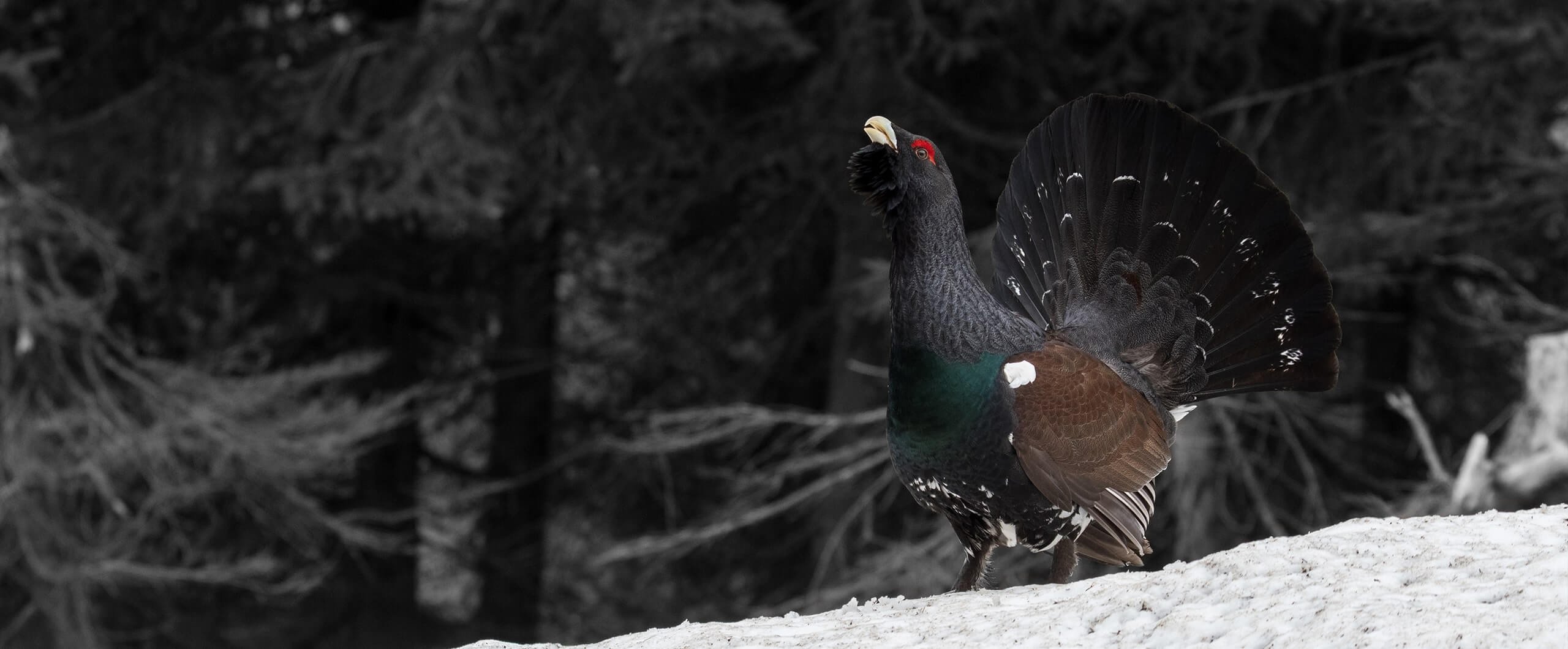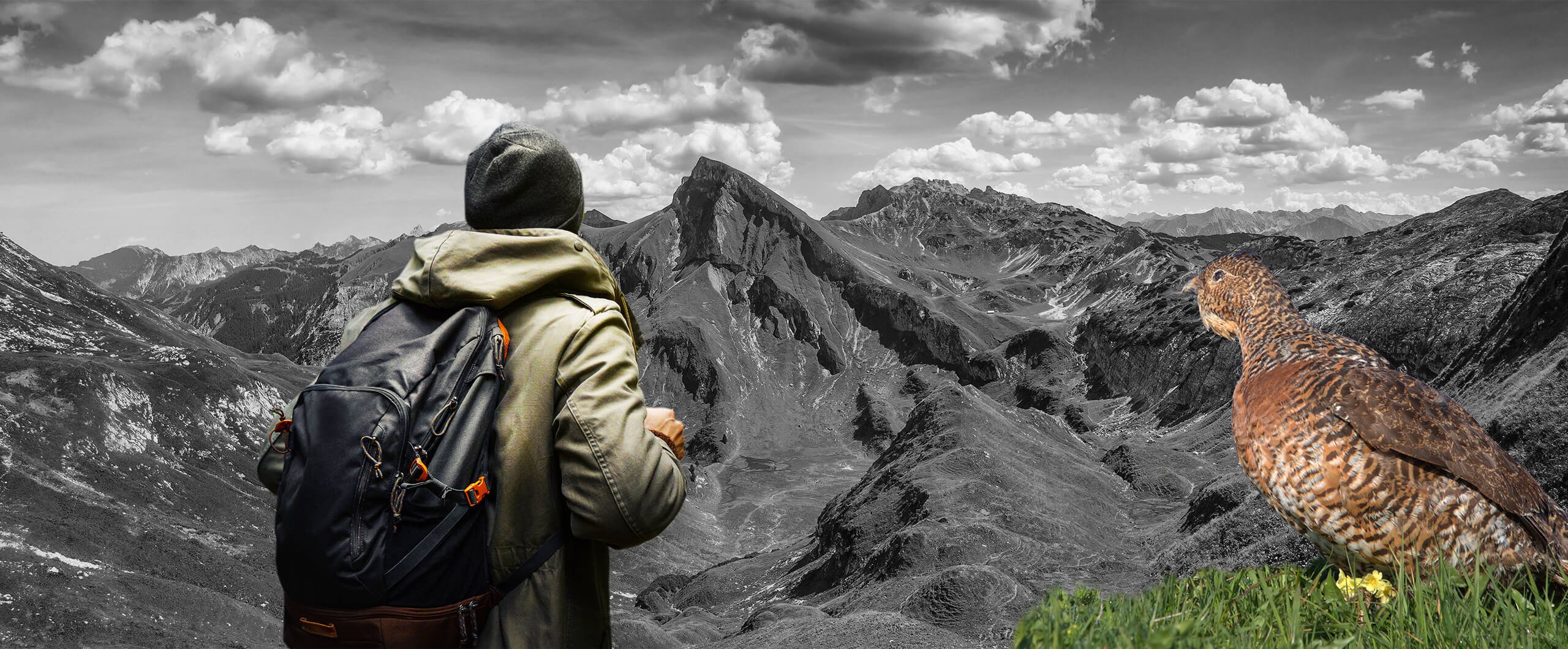
Capercaillie
(Tetrao urugallus)
Profile
- Size: 62-86cm (biggest chicken bird in Europe)
- Weight: 1500-4400g
- Family: Grouse
- Courtship and breeding season: mid-March to mid-July
- Population: approx. 2000 animals in Germany
- Status: Classification "Threatened with extinction" on the Red List. List Germany
Habitat
The habitat of the capercaillie extends to forests with stands of spruce, silver fir, copper beech and sycamore maple - with a predominance of conifers. In addition, the capercaillie requires a rich vegetation of dwarf shrubs near the ground, which is not too compact. Capercaillies attach great importance to stands with a high proportion of old wood, while hens are equally found in bogs.
Clearings in capercaillie habitat are particularly important, as they are used for courtship and as take-off and landing sites.
Nutrition
Capercaillie feed almost exclusively on plants, shoots and leaves of cotton grass in spring, blueberries, cranberries and raisins in summer. Shoots and needles of trees, such as spruce, fir, beech and pine, serve as a food source in winter.
In order to be able to digest the shoots better, the animals ingest so-called "stomach stones", which crush the food in the stomach. Another important source of food for both young and old birds are the ants.
Behavior
During the day, the capercaillie stays on the ground. It spends the night on roosting trees. From March on, the courtship display takes place. An impressive experience, because the capercaillie starts early in the morning on a tree. with its courtship dance. It presents its shimmering tail feathers and struts around on horizontal branches. The courtship song begins with a "squire", followed by a "trill" and concludes with a "snap". Following this, it returns to the ground and mates with the hens.n.
Danger
Humans are one of the biggest disturbance factors of the capercaillie population. On the one hand, it changes the habitat of the capercaillie by carrying out recreational sports (e.g. hiking, ski touring, cross-country skiing, etc.) within the habitat of the animals. In addition, tourist use and forestry intensify, as well as the development of previously untouched forest areas.
Due to these negative impacts, the population of capercaillies in the Oberallgäu is endangered.
Due to their enormous body size, capercaillie lose large amounts of energy during a flight.
